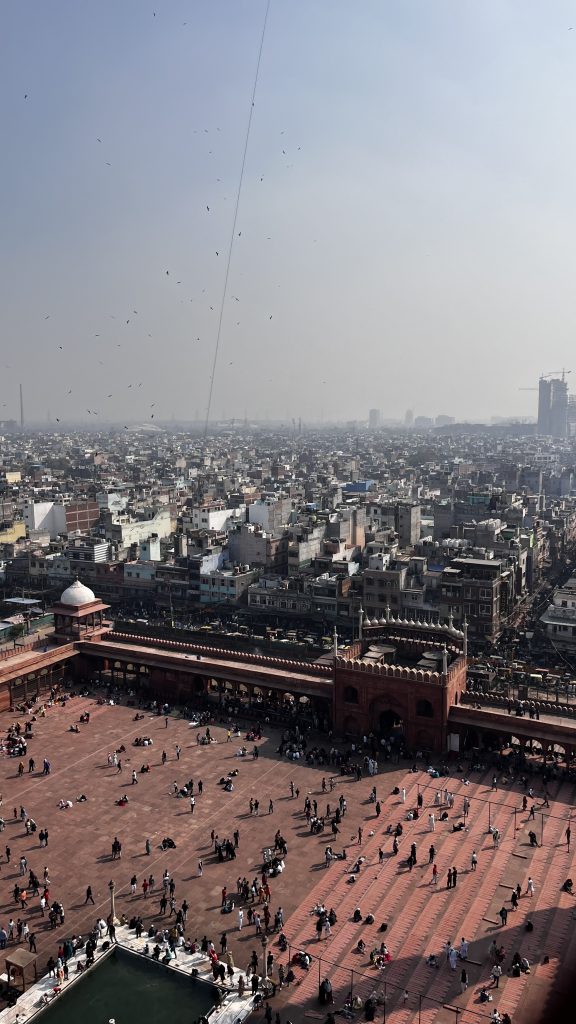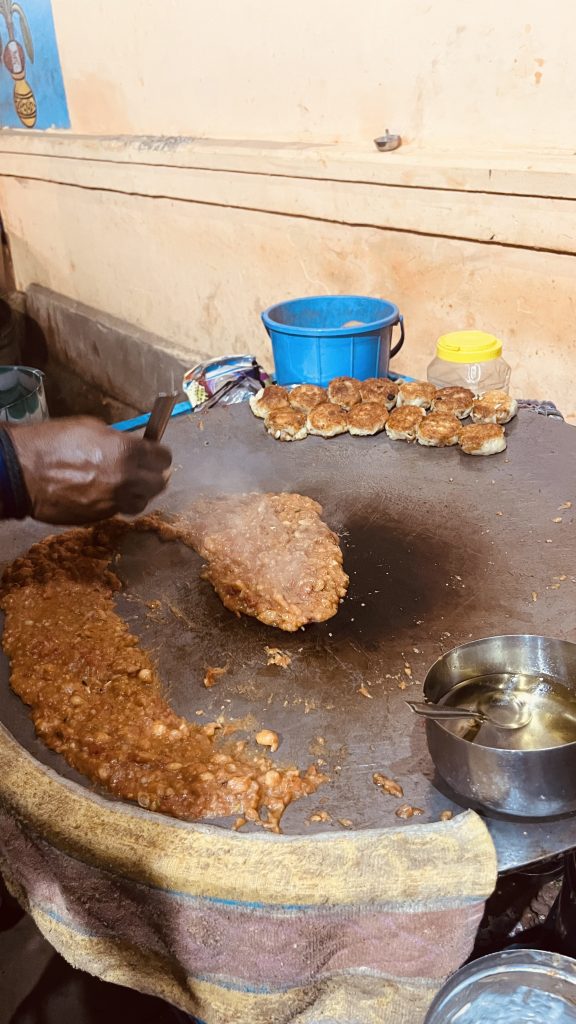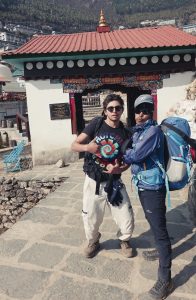By Aviv
In a chic and extremely cozy hostel that I am staying at in Tokyo, I was elated to meet a group of fellow American travelers (I’ve only met a handful in my nine months of traveling) that to my surprise were actually younger than I—a group of high school senior girls on a Spring break trip. One of them, with a thick Southern California Valleyspeak accent posed a question that I predict will be asked of me many times as my Gap year draws to a conclusion: “What is your favorite country that you’ve visited?” It’s an impossible question to answer, for every country has been unique and special in its own way. To compare, for example, Brazil to Japan is to compare apples and oranges—I love apples and oranges equally with no strong preference for one over the other. But, the question did engender a different one in my mind: “Many years from now, when I look back on my Gap year, will there be a country that is more memorable than others?” To that, I think there is an answer.
I am now around one month removed from my month-long journey in India, yet the vividness with which I can remember my experiences makes me feel as if I’m still meandering the streets—the dizzying aroma of street markets, the ceaseless honks of thousands of clustered tuk tuks, the sea of people inundating walkways, the scorching sun burning my skin, the discomforting stares, the depressing scale of pollution, and breathtaking historical architecture. India is a country that every American ought to visit. It is a subcontinent that elucidated to me the extent to which life can be so different for other people. It humbled me. It amazed me. It mystified me. India is the clear answer.
I arrived in New Delhi after approximately three weeks of traveling in Sri Lanka. Though not planned, I knew that by going to Sri Lanka I would perforce end up in India. I was told by many ahead of time that New Delhi is not an ideal place to start a trip in India, and I should leave the capital city as soon as possible. Every warning, more or less, expressed the sentiment that “It’ll ruin the way you perceive the country”. I take the opposite view on New Delhi, a city of 33 million people. It is the perfect place to get an introduction to India and to a new world altogether. I will never forget my walk from the train station to my hostel that night. I was wedging my voluminous backpack and protruding guitar in between what felt like an unending swarm of people on a beyond crowded bazaar street, tuk tuks scraping my sleeve, mopeds swerving all around me, in awe of the bustling restaurants and street-food vendors, and then inhaling the equivalent of a smelling-salt in the form of a public urination wall as I turned the corner to arrive to my hostel. It wasn’t pretty and nice, but it was authentic. And for that, I learned to appreciate it. From Humayun’s Tomb and Jama Masjid Mosque to Chole Bhature and Butter Chicken Masala, there was a plethora of sites to see and the most interesting panoply of foods to try. All in all, it was a city that I departed without any regrets and many life-long memories.



The next destination I visited in India was one that I only knew because of my grandmother, who had visited several years ago and told me that it was an interesting place to see. She was not wrong. After an 8-hour train ride, I arrived from New Delhi to Varanasi, a city that the sacred Ganges River flows through. In Varanasi, death does not have an association with grief or sadness but rather peace and contentment. Corpses are publicly submerged in the Ganges River after being carried from ghats, where they are openly cremated in fires locals claim have been burning for thousands of years. The ashes are then thrown into the river, completing the holy process. Such a macabre yet religiously sacred site was such a fascinating thing to witness. Some locals will also sift through the ashes in the river, searching for valuables like melted gold from jewelry the bodies were burned with, often in front of the family members themselves. Only men are allowed at cremation ghats, for women are considered too emotional to watch the procession which can interfere with the “holiness” of one’s ashes being thrown into the river. The Ganges River, though unsafe for travelers to use, is regularly bathed in by locals and used to wash clothes. On my last night there, I took a street food tour that my hostel offered and, must say, was quite the roller coaster for my taste buds. Aromas, textures, and ingredients that I had never heard of let alone tried were the norm for the street food in India for me. I took multiple of these types of tours throughout my travel because they afford more safety than my own discretion from getting food poisoning. However, the one time I got ill from food in India was in Varanasi, and, the morning after, I would pay a hefty price through a grueling 17-hour train ride to Agra. All in all, I am not one that will judge Varanasi, or any place for that matter, as backward or regressive. Its ancient customs and rituals are more of a testament to the rich history and culture of Varanasi. The fact that religious traditions are so well-preserved and authentically practiced make an even stronger case of why one should visit.



Arriving in Agra was not a smooth journey, for suffering from food poisoning whilst on a moving train with bathrooms that are bereft of hygiene only exacerbated my condition. So much so that I actually slept through the train stop at Agra and woke up at 4AM still on the train but far from my intended destination. What ensued was a scramble to get off and find a train back to New Delhi where I could find another one to Agra. I spent 24 hours in total on the Indian Railway System until I came to Agra. In the end, the suffering was worth it because the Taj Mahal is worth it. The first glimpse I got of that ivory mausoleum took my breath away. Standing before the tranquil, blue pool mirroring its towering white form, I understood why it is revered as a wonder of the world. Among the three wonders I’ve visited, it undoubtedly stands out as the most awe-inspiring. Departing from Agra, a city I primarily visited for the Taj Mahal, I ventured onward to Jaipur, my inaugural destination in the state of Rajasthan.

I spent a total of fifteen days across five cities in Rajasthan. The largest state by area in India, one could easily spend multiple months properly experiencing its rich and vibrant culture. However, with less time, I limited myself to only seeing the highlights of the biggest cities. In Jaipur, I visited the Hawa Mahal Wind Palace, Nahargarh Fort, and charming temples filled with playful monkeys. It was also my first exposure to an experience that would become commonplace for the rest of my travels: being asked for pictures just for being a tourist. While sometimes excessive, I embraced these interactions as flattering and began a collection of pictures people asked to take with me. Therefore, in my camera roll, accompanying images of the stunning city is a large collage of selfies and pictures of me with Indian strangers. From Jaipur, I took a relatively short four hour bus ride to my next destination.



Pushkar, a comparatively smaller city than those I had previously visited, has my sympathies. I felt a little too comfortable there, for it gives the impression of an Israeli colony. Walking around, every restaurant advertised Israeli food, signs were written in Hebrew, the vast majority of tourist there were Israelis (as you could hear Hebrew being spoken everywhere), and I even got my Tefillin done by a rabbi in a rabbinical center, a service I have not done since my Bar-mitzvah. The most blunt but accurate way to put it is to say that we have overrun the place. There is one Hindu temple that looks over the quaint city where I watched the sunset. There, along with the rabbi from before, I met some other Israelis who explained to me why so many of them come to Pushkar after their compulsory military service. The general message I understood was that it’s seen as a place to decouple and relax—usually with a lot of marijuana—after such an intense and stressful three years in the army. To be in a place abroad with other Israelis also makes for a comforting environment where they can meet others with similar backgrounds and shared experiences. I understand why Israelis would want to “stick together” and congregate in places outside of their country where they can have fun and explore, but it was not so much what I was looking for. I used my time in Pushkar to journal, play some guitar, read, and reflect on life. However, considering I wanted to experience more authentic India, I ate my falafel and pitas and drank my Israeli Iced Coffees for two days and then left for Udaipur.

Udaipur represents the kind of contrast that is possible in India. On one hand, you are surrounding by glistening, tranquil blue lakes and graced with a ornately decorated city palace, and on the other you are hugging walls along the street to avoid getting run over by a stampede of honking mopeds and tuk tuks that drive anarchically. That being said, the confluence of several historical and religious eras make the architecture and general atmosphere of the city very beautiful and enjoyable. I was lucky enough to meet a pair of sisters that were born and lived in Udaipur that showed me some hidden gems of the area and even took me on the back of their own mopeds—an exhilarating experience in its own right—to a lovely sunrise spot on the outskirts of the city.
With a group I met in Udaipur, I then continued on to Jodhpur, the “Blue City”. Nestled in the heart of Rajasthan, it proffered a rich tapestry of culture, history, and fun activities. The narrow street markets are lined with azure-hued houses that alone are a picturesque site. The Mehrangarh Fort dominates the skyline and the Mughal-style buildings make for an infinite list of places to visit. While there, I also got to zip line around the city fort, an activity made possible to all of us for free by one of the girls in the group who is the daughter of its owner. Also, I had some of my best food experiences there, yet, for most of my meals, I seldom knew exactly what I was ordering—I would ask for what the waiter recommended and then, without hesitancy, would say “Sounds great, I’ll do that”. It was a strategy that worked, more often than not. By then, my time in the country was wearing thin, and I had one more place I wanted to visit. Jaisalmer, “the Crown Jewel” of Rajasthan as my father described it to me, was a city that looked like it was out of a movie. Much less traveled to than other cities, I only knew of Jaisalmer because my father, in his trip to India a century or so ago, recalled it being a highlight I could not miss. Everywhere you turn the color gold dominates your view, as almost all the buildings are constructed out of golden sandstone and usually in historical Rajput style. Many people can say they have seen a UNESCO World Heritage Site, but, with a hostel inside the Jaisalmer Fort, I got to sleep in one. The intricately carved windows and sharply latticed balconies of regular buildings could easily make for museums themselves. On my last night in Jaisalmer, I did an overnight camel safari that I organized cheaply and haphazardly with a company that I managed to book with the morning I left for the tour. However spur-of-the-moment it was, it turned out to be a very authentic and encompassing experience that, partly in fact for the food and partly for the good time, left me with a great final taste of India.



As I look back on my journal entries and all my pictures, that one month in India has given me a lifetime of memories and stories. This blog, as long as it is, does a terrible job of conveying even 5% of the meaningful experiences I had in India, not to even speak of the simple things that are not story worthy but make up the most of one’s impression of a country.
After a month of immersing myself in the hustle and bustle of Rajasthan, I decided I needed a little breather. And so, the desirable activity that obviously comes to mind in such a pursuit, for me, was a high-elevation trek through the Everest region of Nepal.
I had no plan, no trekking equipment, and not much time (I had already scheduled a flight to Japan on the 29th of March). So, when I found a trekking agency that was highly-reviewed and trustworthy, I asked for what trek they believed was the most beautiful and decently difficult. Four days later, along with a Swiss girl who booked the same trek several months prior, I embarked on the Three Passes Trek through Everest Base Camp. The trek spans over 103 miles, reaches a maximum elevation of 18,200 feet, covers three high passes along with the base camp of Mt. Everest, and takes 17 days. It was unlike anything I had done before. First and foremost, to arrive at the starting village, Lukla, I had to take, statistically speaking, the single most dangerous commercial flight in the world: from Kathmandu to Tenzing-Hillary Airport. The runway is only 500 meters long, has a 12% slope gradient to slow/speed up the plane, and sits on the edge of a 9,000 foot cliff; I was genuinely nervous. Once we landed and I took a look around, it truly dawned on me just how scary the Himalayas are and that what I was setting out to do would be a daring adventure of epic proportions . Standing at 5 ’10”, I already feel small when I’m with my friends, so enveloped below the Himalayan giants, I felt insignificant like a whisper in a howling tempest. Once we began the trek, most days, we—the group being myself, the Swiss girl, our guide, and porter —would walk 6-7 hours (days to get to the top of passes would be closer to 8-9 hours) until we arrived at our next village. We would sleep in tea houses, which are really just simple lodges, of small villages all throughout the region run by Sherpas. Though it was nice to not sleep in a tent like I was expecting, the lodges are not insulated at all, meaning the nightly -20 degrees Celsius temperature outside was the same inside. Yet, even with a high-quality sleeping bag, a silk liner, and almost all my layers worn, I was frigid at night, which coupled with high-elevation, resulted in poor sleep for more than half a month. And as far as hygiene was concerned, it did not exist, as there hardly were any showers available and, if there were any, it was always too cold to remove all of one’s clothes for one. For food, in the Himalayas, there is really only one dish, known to all climbers, that you eat for most lunches and all dinners: Dal Bhaat. With soft rice and soupy-textured lentils as the dish’s center, it is accompanied by a variety of other side foods such as boiled potatoes, papadum bread, and green vegetables. Though delicious and great as fuel for the body, by the 10th consecutive time of having Dal Bhaat, the taste became monotonous and repetitive, becoming a simple source of calories. The long list of unpleasantries, which honestly run even longer than I have described, I write about to make a key point: as miserable the conditions were at some times, they were all trumped by the views and rewarding feeling of completing the Three Passes trek. In other words, there is a reason people put up with the mentally taxing and physically warping nature of the journey, and that is because it is a special kind of feeling to get to the top of the Kongma La Pass, or the viewpoint of Kala Patthar, or, of course, the base camp of Mt. Everest. It is one that is ineffably joyous and triumphant. There were times, with my feet blistered, body weak, and head nauseous where I would ask myself “What am I thinking doing something like this?”, but those questions of doubts were always answered at the top. I should also add that seeing Mt. Everest up close and personal dispels any of my child-age fantasy to climb the thing. It is not awe-inspiring at all but rather fear-inducing, evincing how crazy one must be to climb the mountain. I think I’ve done my fair share of mountains for my Gap year, and I feel ready to stick to sea level for the foreseeable future—which for me doesn’t even extend so far as tomorrow. So, who knows? After returning to Kathmandu, the very same day I flew out to Tokyo, Japan where I traveled with my younger brother for the duration of his Spring break. That has been a much better breather, I must admit.



